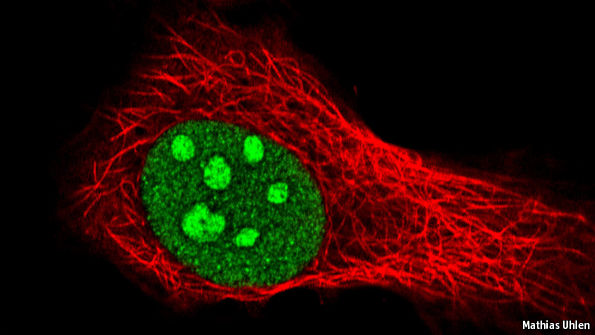An atlas of where proteins are found in cells

ONE of the most important concepts in biology is compartmentalisation. Different organs do different jobs within bodies. Different tissues do different jobs within organs. Different cells within tissues, likewise. And within cells, different organelles—as subcellular components such as nuclei, mitochondria and Golgi bodies are known—are also specialised for particular functions. Each of these levels of organisation has, over the years, been catalogued in what have come to be known as atlases, beginning in 1543 with Andreas Vesalius’s “De Humani Corporis Fabrica” (On the Fabric of the Human Body), the founding text of modern anatomy.
The latest level of detail is to look at different proteins within organelles. Proteins are the molecules that do most of the work within a cell. They range from things like actin and myosin, which collaborate to flex muscle cells—and thus the muscles of which those cells are part—to the enzymes of the Krebs cycle, which disassemble glucose to release the energy therein. The Cell Atlas, a database launched on December 4th at a meeting of the American Society of Cell Biology, records which proteins are found in which…Continue reading
Source: Economist




